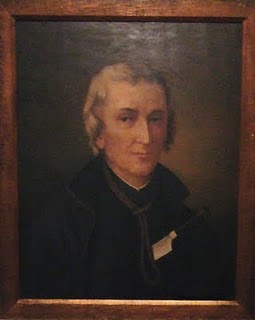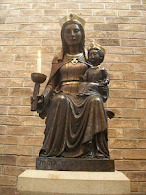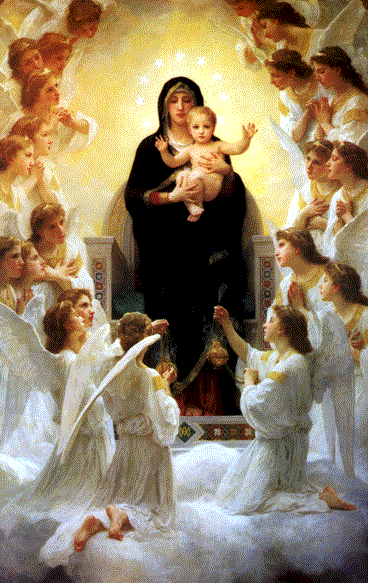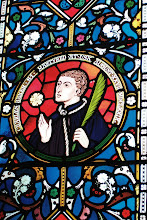
On 25th October 1970, Pope Paul VI canonised forty martyrs from England and Wales. The Forty Martyrs of England and Wales were a diverse group - men and women, priests and lay people – but, between the years of 1535 and 1679, they all shed their blood for their Catholic faith. Saint David Lewis was the last of the forty to die. Ten of the Forty Martyrs of England and Wales, including Saint David Lewis, were Jesuits. In the next few posts, we will take a brief look at each of the ten. Here are the first two.
1) St Edmund Campion was born in London on 25th January 1540. He possessd both academic brilliance and exceptional gifts of oratory. Although he had become a Church of England deacon, Edmund had leanings towards the Catholic Church. Upon hearing that a seminary had opened in Douai, he made up his mind to go there. When this news reached Robert Cecil, one of Queen Elizabeth’s closest advisors, he remarked, “England has lost one of her diamonds!” Eventually, Edmund decided to join the Jesuits and he arrived in Rome in April 1573. He was ordained in 1578. His work took him to Prague where he stayed for many years. In time, he was sent on the English Mission where, to the dismay of the authorities, his preaching bore much fruit. They sought to silence him. Allegations were made that the Pope, in alliance with an assortment of Catholic Rulers, planned to invade England and Jesuits and seminary priests had been sent to lay the groundwork. These priests were to be apprehended and so, for more than a year, Edmund Campion was hunted in England. On 17 July 1581, Fr Campion was captured at Lyford Grange, near Abingdon, Berkshire. After months of imprisonment, interrogation and torture, the Jesuit was martyred at Tyburn on 1st December 1581. He was not quite 42 years old. St Edmund Campion’s body was quartered and displayed at each of the city gates as a stark reminder to other Catholics.
2) St Alexander Briant was born in Somerset in 1556. For a short time he studied at Oxford before going to the English College at Douai in 1576. He was ordained a priest on 29th March 1578 and sent on the Mission in August 1579. Less than two years later, 28th April 1581, Alexander was captured by a pursuivant called Norton and imprisoned at the Counter Prison, London, where he was kept in isolation. He was denied food and drink and was driven to using his hat to catch the drips of rain which leaked into his cell. Fr Briant was moved to the Tower of London where he underwent various forms of torture including having needles driven under his nails, and racking. Norton boasted that he would make the unfortunate priest a foot longer! The saintly priest was so steadfast that the Lieutenant of the Tower raged, “What a thing is this? If a man were not settled in his religion, this were enough to convert Him!” In his cell, Fr Briant had managed to make a little wooden cross and, when he was tried in Westminster Hall on 16th November 1581, he clasped it tightly in his hands. Of course, the little cross was snatched from him causing the priest to retort, “You can take it out of my hands, but not out of my heart.” (The cross was later bought by some Catholics and it is now in the English College in Rome.) Predictably, Fr Alexander Briant was condemned and was placed in irons which were not removed until his execution. Before his trial, the young priest had written to the English Jesuits requesting admission into the Society. This request was accepted by the Order. On 1st December 1581, 25 year old Fr Alexander Briant, S J, was hanged, drawn and quartered at Tyburn.
Thursday, 29 October 2009
TEN WERE JESUITS (PART 1)
Subscribe to:
Post Comments (Atom)








.JPG)

.JPG)





Gostaria de saber onde encontro uma reliquia de saint henry morse
ReplyDeletePaulo Sergio Morse - Rio de Janeiro - Brasil
paulomorse@hotmail.com
Anonymous
ReplyDeleteI am very sorry but I do not know where you could get a relic of St Henry Morse. I will try to find out about a medal or something else for you. If you continue to check into this blog I will let you know in this comments section. God bless you.